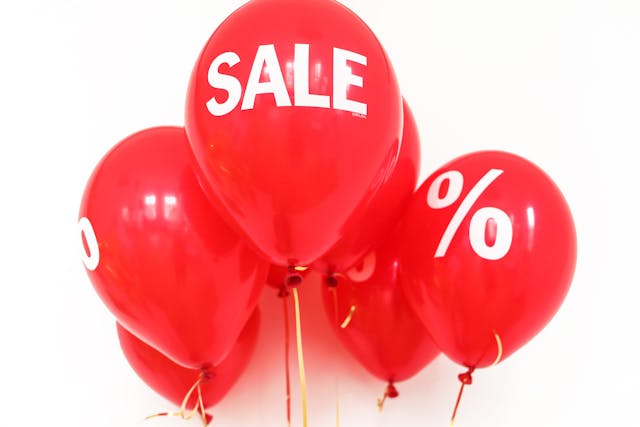Beware Fake “Sales” Tactics
Are you a sucker for a sale? If so, you may have a target on your back. Don’t feel bad; it happens to the best of us. We see that little red or yellow tag on something alluring in the window. The next thing you know you’re walking out with merchandise you didn’t really need – for a cost you may not be able to afford.
Fake sales tactics are making it even harder to recognize a good deal when you see one. Below are some telltale signs a company or sales team is trying to take advantage of you by presenting sales that aren’t legitimate.
How to Watch Out for Deceptive Pricing
According to the Washington Post, “Some sales for 30, 40 and 50 percent off are simply rollbacks, returning prices to their starting points” – a practice that can even be illegal. Here are some other helpful factoids the report discovered recently:
1. Some Markdowns Are Phony
Some retailers mark prices up intentionally right before a sale so they can claim big markdowns. Don’t fall for it.
2. Fake Sales Spike Around Holidays
Be especially careful to avoid getting sucked into bogus sales around holidays. No matter the holiday, someone is trying to profit off of it, possibly through less than upstanding means.
3. Be Skeptical of Sales That Mention “Regular” and “List” Prices
Checkbook.org discovered last year that “most stores’ sale prices—even those that advertise big savings—are bogus discounts, with retailers offering the same ‘sale price’ more than half the time. Often, these fake sales never end: For eight of the 24 retailers, our shoppers found more than half the items we tracked for each were offered at false discounts every week or almost every week we checked.”
In other words, any time you see a product’s “regular” price being compared to the sale price, take those numbers with a big grain of salt because there’s a significant chance you’re being misled.
Protect Yourself by Researching, Tracking Prices & Other Methods
There are lots of ways to be a savvy shopper and weed out bogus deals from your life. While not all of these tips are possible all of the time, they may be able to help you create shopping habits that are better for your long term financial wellbeing.
- Don’t buy sales items on the spot unless necessary.
- Research the retailer to see if they have a history of fake sales.
- Google recently released a “new destination on Search” that makes it easier for consumers to track and compare prices. This includes a “Shopping insights label in the Chrome address bar. Click on it to open a new section in the Chrome side panel that will show that product’s typical price range and a price history graph for up to the last 90 days.”
- Question your motives. Take a step back to consider whether you’re impulse shopping because you love a good sale.
- Do an online search for similar items. If this “sale” item is strangely more expensive than comparable items, someone may be misleading you.
- Look up online reviews. What kind of story are they telling about the product in question? Is it really worth it, no matter the price?
- Make a shopping list before leaving home and stick to your list.
Get a Prepaid Debit Card at a Local Currency Exchange to Protect Your Money
If you get sucked into sales more than you’d like to admit, consider getting a prepaid debit card at your local community currency exchange (CCEA). They don’t let you spend money you don’t have. While you’re here, you’ll see we offer a whole bunch of other services that help people stay on top of their finances throughout the year.
Give us a call to find out more, or stop by your nearest location to create smarter money habits today!

With over 350 locations, many open nights, weekends, and holidays (and several stores with 24/7 availability), you can rest easy knowing your financial needs can be taken care of when you need them most. We’re in the heart of every community. Don’t believe us? See for yourself.